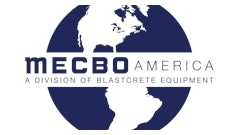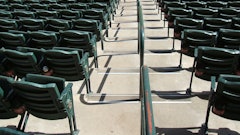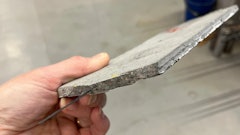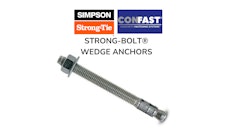
High Definition TV, iPods, TiVo ? what are all these fancy gadgets floating around in television commercials and magazine ads? Why invest time and money in new technologies when the old ones work just fine? Technology can often seem unnecessary, and people might be apprehensive about learning something new and unknown. But technology breeds efficiencies, and on a construction site "efficiencies" translates into "money savings." Investing in technologies on the jobsite can save time, bring down labor costs, increase accuracy and offer flexibility in scheduling.
One technology concrete contractors have been increasingly interested in over the past few years is using survey-type equipment to do their own jobsite layouts, including mapping foundation walls, bolt patterns, distances and so on. They achieve this through using a total station, either with a mechanical version for a two-person layout or with a robotic total station which allows a worker to do layout solo.
In recent years, manufacturers have come out with software packages that allow a contractor to use his total station to the fullest potential, connecting his total station with information on a building blueprint. The software packages are contractor-specific versions of the type of software surveyors use, minus the surveyor-specific details, and focus on simplicity for the contractor such as contractor terminology and the ability to color code points to keep footings or bolt patterns separate from foundation walls.
What's new
In 2003, Trimble introduced its LM80 Layout Manager field software for mechanical total stations. It allows contractors to enter building wall dimensions and angles of the walls into the software and connect this information to the total stations. Since then, Trimble has made the software available for robotic total stations. As electronic CAD files became more common, Trimble introduced LM80 Desktop in 2007, which allows contractors to better use that information. "It allowed the contractors to import a CAD file into the LM80 Desktop, select the points they wanted to lay out and synch the file via cable to the LM80. Contractors could then plug that into their robotic total station so they were able to lay out those points," says Ken Shawler with Trimble.
At World of Concrete 2008, Trimble introduced a wireless version of the LM80, allowing office personnel to send CAD files to the LM80 via e-mail.
Topcon Positioning Systems introduced a software package in 2007 to match its total station offerings. "We've got a software product called Pocket Layout which allows contractors to quickly and easily calculate where the corners of their building will be, where the footers will be, bolt patterns and those kinds of things directly off the blueprint. Then they can convert those into points and connect to a total station, which measures angles and distances, and allows them to lay out their own jobs instead of relying on an engineer or surveyor to do it," says Jason Killpack with Topcon.
New introductions also have been made in the total stations themselves. Last summer Trimble introduced the SPS610 total robotic station geared toward the residential market and the SPS710 geared toward the commercial market.
Topcon's recently upgraded IS line of robotic total stations is outfitted with a digital camera that records how a contractor got a measurement and where he mapped it on the ground, a feature helpful for any future liability issues or questions. "It especially works well for things that are hidden," Killpack says. "In the concrete industry you have all kinds of rebar and support systems that are hidden inside the concrete after it's poured. So with something like this, when they're measuring to install a rebar system or expansion joint, they have a picture of where it was laid out exactly before the concrete was poured over the top."
As the demand for total stations in construction applications gained acceptance and were no longer considered only a survey tool, Leica Geosystems renamed its building construction-focused total stations the Builder Series, to reflect the user-friendly changes they made to make the machines easier to use and learn.
Reacting to the requests from concrete contractors for even simpler and more powerful systems to meet their needs, Leica recently launched its RedLine series. The RedLine series includes the "PowerTracker" robotic tracking total station (TPS) and the "PowerBox/PowerAntenna" GPS solutions. The RedLine system is unique in that both the TPS and GPS have a single button operation on the primary sensors.
"Contractors really appreciate the uncomplicated look and feel the RedLine provides," says Dan Dykhuis with Leica. "Regardless of their level of experience, operators are no longer intimidated when they view a total station for the first time. An initial level of comfort is very important when experiencing the benefits these systems."
Taking the plunge
Contractors looking into purchasing a layout system will find assistance through manufacturer dealer channels. Dealers offer demonstrations of the equipment and after-purchase support is available. Manufacturers also hold industry events such as the Topcon Roadshow or Trimble's Dimensions, which offer more in-depth education on the systems. A dealer can also help a contractor decide if a mechanical or robotic total station is right for his company.
"Robotic and mechanical systems both have their place in the market," Dykhuis explains. "The robotic systems are increasing in popularity as they allow just one person to perform the tasks that normally takes two. While this is a huge advantage on large jobsites where layout is complex and the cost of labor is high, there are still many smaller jobs where the mechanical version fits the bill for performance and budget."
A mechanical total station package will run a contractor between $6,500 and $10,000, while a robotic total station package can run anywhere between $25,000 and $40,000. Some contractors initially balk at the price, but when they discover the accuracy and speed they can achieve, the numbers start making sense. "I would say a contractor can do layout three to four times faster with a robotic system over the traditional way," Shawler says. "And the bigger, more complex a job the better the time savings."
Control on the job is also an important consideration that entices many contractors to start using these layout systems. "A construction site is a very rough environment ? there are machines moving around, materials being delivered, trash and junk being hauled off, and different forms being utilized all the time. One thing a superintendent will always know if he uses a total station, and for example our Pocket Layout software, is he will be able to go out if at any time he has a question about where something is and be able to check it without having to wait for someone to come and measure it for him," Killpack explains.
If you're a contractor who's thinking about incorporating new technologies into your business, or if you already use a total station and are looking to upgrade your equipment, the industry offers many new technologies that can help you gain efficiencies on the jobsite and put more money in your pocket.




























